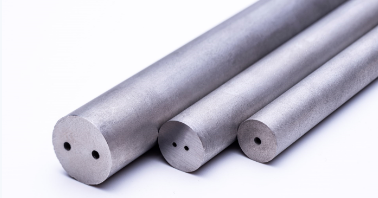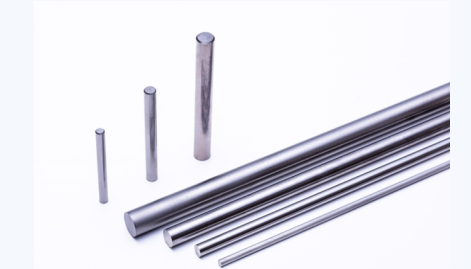Cemented carbide milling cutters classification
Cemented carbide milling cutters come in a variety of shapes and sizes, each designed for specific machining tasks. Let's take a closer look at their classification.
1. End Mills: These versatile cutters feature cutting edges on both the periphery and end face, allowing for side milling, slotting, and contouring operations. They are available in various types such as square end mills, ball nose mills, corner radius mills, and roughing end mills.
2. Face Mills: Designed to remove material from the surface of workpieces, face mills feature multiple inserts or replaceable tips that ensure efficient cutting performance.
3. Slot Drills: As the name suggests, these cutters specialize in creating slots or channels with precision. They typically have two flutes and can be used for plunge milling as well.
4. T-Slot Cutters: Ideal for machining T-slots on machine tables or workholding fixtures, T-slot cutters have a unique shape that allows them to create precise grooves with ease.
5. Shell Mills: With large diameters and multiple inserts or carbide blades mounted on their periphery, shell mills excel in heavy-duty machining operations like facing wide surfaces or slab milling.
Each type of carbide milling cutter has its own strengths and applications - understanding their classifications will help you choose the right tool for your specific needs.

Applications of Cemented carbide milling cutters
cemented carbide milling cutters are versatile tools that find application in a wide range of industries. Their unique characteristics make them suitable for various cutting operations and materials.
In the automotive industry, cemented carbide milling cutters are used to shape and finish components such as engine blocks, cylinder heads, and transmission parts. The precise cutting capabilities of these tools ensure high-quality surfaces and tight tolerances.
In the aerospace sector, cemented carbide milling cutters are essential for machining complex shapes on aircraft parts like turbine blades and structural components. These tools can handle difficult-to-machine materials like titanium alloys with ease, maintaining dimensional accuracy in critical applications.
The mold and die industry also benefits fromcemented carbide milling cutter' ability to remove material efficiently and achieve intricate geometries. They are commonly employed in the production of injection molds, stamping dies, and extrusion tooling.
Moreover, cemented carbide milling cutters play a crucial role in general metalworking tasks such as slotting, profiling, contouring, and pocketing across different industries. From producing precision gears to fabricating medical implants or creating custom prototypes - these tools offer unmatched performance.
With their exceptional durability and resistance to wear even at high speeds or under heavy loads, cemented carbide milling cutters have become indispensable for many professionals seeking efficiency and precision in machining operations.
Cemented carbide milling cutter milling method
cemented carbide milling cutters are versatile tools that can be used for a variety of milling operations. The milling method used with cemented carbide milling cutters depends on the specific application and material being machined.
One common milling method is called peripheral milling, where the cutter moves along the outside edge of the workpiece. This is typically used for roughing operations or removing large amounts of material quickly. In peripheral milling, multiple teeth on the cutter engage with the workpiece simultaneously, resulting in efficient material removal.
Another popular method is face milling, which involves cutting across the surface of a workpiece to create a flat finish. Face mills have multiple inserts or blades that remove material as they rotate. This method is often used for creating smooth surfaces or achieving tight tolerances.
For more complex shapes and contours, contouring or 3D profiling can be done using carbide end mills. These specialized cutters have varying flute lengths and profiles to accurately follow intricate paths while removing material efficiently.
In addition to these methods, there are also slotting and plunge milling techniques which allow for precise cutting in specific areas or depths within a workpiece.
Choosing the right milling method depends on factors such as desired finish quality, tool life requirements, and efficiency considerations. It's important to carefully assess each machining situation and select an appropriate carbide mill cutter and corresponding technique to achieve optimal results.

Cemented carbide milling cutters maintenance
Cemented carbide milling cutters are a valuable tool in many machining operations. To ensure their longevity and optimal performance, proper maintenance is essential. Here are some tips for maintaining cemented carbide milling cutters:
It is important to clean the cutter after each use. Use a brush or compressed air to remove any chips or debris that may have accumulated during the cutting process. This helps prevent buildup that can affect the cutter's effectiveness.
Inspect the cutter regularly for signs of wear or damage. Look for any chipped edges or dullness on the cutting surfaces. If you notice any issues, it may be time to replace the cutter or have it professionally sharpened.
Additionally, storing cemented carbide milling cutters properly is crucial for their maintenance. Keep them in a dry and clean environment, away from moisture and excessive heat. Using protective cases or containers can help prevent accidental damage while in storage.
Furthermore, lubrication is key when using cemented carbide milling cutters. Applying coolant or cutting oil during operation helps reduce friction and heat buildup, prolonging the life of both the cutter and workpiece.
Always follow manufacturer guidelines when handling and using cemented carbide milling cutters. This includes adhering to recommended speeds and feeds as well as using appropriate cutting techniques.
By following these maintenance practices, you can maximize the lifespan of yourcemented carbide milling cutters and optimize their performance in various machining applications without compromising quality!
Selection of cemented carbide milling cutters
When it comes to selecting https://www.diatooling.com/Carbide-Rods-with-Coolant-Holes-A-Solution.htmlmilling cutters, there are a few key factors to consider. First and foremost is the type of material you will be working with. Different materials require different cutting tools, so it's important to choose a cutter that is specifically designed for your application.
Next, you'll want to consider the size and shape of the cutter. This will depend on the specific machining operation you are performing and the desired outcome. Whether you need an end mill, ball nose cutter, or face mill, there are various options available to suit your needs.
Another crucial aspect is the number of flutes on the cutter. The number of flutes affects chip evacuation and surface finish, so it's essential to select a cutter with an appropriate number of flutes for your application.
Additionally, take into account the coating on the carbide milling cutter. Coatings such as TiCN or TiAlN can enhance tool life and performance by providing increased hardness and wear resistance.
Don't forget about cost considerations when selecting cemented carbide milling cutters. While high-quality cutters may come at a higher price point initially, they often offer longer tool life and better performance in the long run.
By carefully considering these factors – material compatibility, size/shape requirements, flute count,
coating options,and cost – you can ensure that you choose an optimal carbide milling cutter for your specific machining needs.

Conclusion
Cemented carbide milling cutters are versatile and essential tools in machining operations. With their exceptional hardness, durability and heat resistance, they offer superior performance compared to traditional high-speed steel knives.
In summary, cemented carbide milling cutters are indispensable tools that provide efficiency and precision in metal machining processes. Its outstanding performance makes it ideal for tasks ranging from roughing to finishing in different industries. By understanding their classification and applications along with proper maintenance practices and a careful selection process; one can harness the power of these advanced cutting tools to achieve superior results in any machining operation.
To celebrate China’s upcoming Double Eleven festival this Saturday, everyone is welcome to contact us and we will provide you with a full range of carbide cutting tools at competitive prices.








Comments (0)